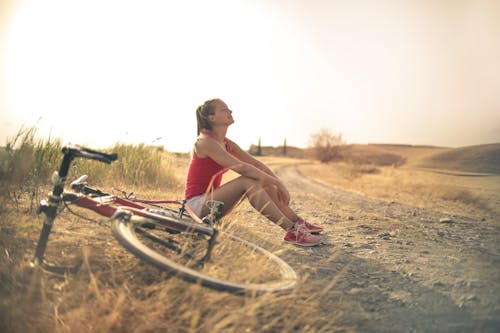Your TDEE is your Total Daily Energy Expenditure. People who are trying to lose weight need to know why their TDEE matters, because losing weight is, in many ways, a numbers game.
You need to count the calories you’re eating and drinking, track your macros, and keep track of how many calories you burn during workouts and other activities.
You can lose weight by doing the math and calculating how many calories you should be eating based on how many calories you burn each day. If learning all the formulas that bodybuilders and fitness professionals use seems confusing, that’s because it is. In fact, an entire subgenre of the fitness industry has popped up to facilitate it. Many personal trainers now include nutrition guidance in their plans, and there is an entire library of smartphone apps created to make calculating nutrients and energy expenditure easier for beginners.
However, one metric stands out above the rest. TDEE combines several metrics into one number that simplifies the entire process of figuring out how much you should eat and how many calories you should aim to burn.
So, what exactly is TDEE, how do you find out what yours is, and why is it important for losing weight? Read on for the answers to these questions, as well as some tips for increasing your TDEE if your job has you sitting in a chair all day.
What is TDEE?
Remember that your TDEE is your Total Daily Energy Expenditure. It represents how many calories you burn daily, and includes the energy you use during exercise, as well as how many calories your body burns at rest.
Ashley Hawksworth at Stag Fitness Nutrition Coaching explains why knowing your TDEE is important: “Your TDEE is the sum of BMR (Basal Metabolic Rate), EA (Exercise Activity), NEAT (Non-Exercise Activity Thermogenesis), TEF (Thermic Effect of Feeding) and CWE (Cold Weather Exposure). Knowing your TDEE means that you can calculate your daily caloric needs with relative accuracy.”
There are several TDEE calculator sites you can go to to find out your TDEE. If your TDEE is something you want to track daily, you can download any of the available apps out there, notably The TDEE Tracker, although it is available for iPhone only.
Why does cold weather exposure matter for calculating your TDEE? Cold exposure actually increases your metabolism in two ways: through shivering, which increases heat, and thus increases metabolism, and through non-shivering thermogenesis. During non-shivering thermogenesis, your body converts food energy into a heat source, keeping you warm without the need to shiver.

Why Does Your TDEE Matter for Weight Loss?
Knowing your TDEE is helpful when it comes to meal planning and creating effective calorie intake goals since the only way to lose weight is by creating a caloric deficit.
This is because of the relationship between your BMR and your TDEE.
First, you need to figure out what your BMR is. This is how many calories your body burns at rest, doing things like breathing, pumping blood, digesting food, regulating your temperature etc. Most people have a BMR of between 1000-2000, meaning that’s how many calories they need per day just to exist, but everyone’s BMR is unique. Plenty of factors affect your BMR, including genetics. You can find out more about how your genes influence your weight by taking a DNA test from CircleDNA.
After learning your BMR and your TDEE, you know what your daily calorie intake limit is if you’re trying to create a deficit.
If you’re simply trying to maintain your weight, your daily caloric consumption should be equal to your TDEE.
Can you Increase Your TDEE by Being More Active?
Of course, you can always increase your TDEE by increasing the amount of activity you engage in daily. In the gym, you can add on an extra mile, an extra set, more reps, or increase the amount of weight you’re carrying to expend more energy. If you’re taking a walk, you can wear weighted vests while you walk.
However, for many office and remote workers with sedentary jobs, finding opportunities to increase their TDEE can be challenging. You can’t very well be out at the gym or running around the block if your boss expects you to be at your computer. Nevertheless, there are some small steps you can take to increase your TDEE during work hours, both at the office and at home.
- Stand up. Get a standing desk or one that can be adjusted for both sitting and standing. Make standing your default and only sit when you need to. If buying a standing desk is out of your price range, there are many options for affordable risers, or you can put your laptop on top of a stack of books. Some people also put mini treadmills at the foot of their stand-up desk, which allows them to walk while still being at their computer.
- Take the stairs instead of the elevator. If your home or office building doesn’t have any, try to find a park nearby that does.
- Use your break to move around. Instead of using your 15-minute break to scroll Instagram, walk a few laps around your house or building, climb some stairs, stretch, or hold a plank position for a couple of minutes.
- Create opportunities to move. Put things you use regularly on the opposite side of the room so that you need to stand up and go get them whenever you need them. Instead of keeping a water bottle at your desk, for example, make a point to take a 5-minute break every hour to go get a glass of water from a different room.
- Walk instead of driving. If possible, start walking more often when you have to run errands instead of driving.

Do Activities You Enjoy that Get You Moving
Remember that increasing your daily energy expenditure doesn’t necessarily mean forcing yourself to do more grueling workouts. If you want to increase the amount of energy you’re putting out but going to the gym doesn’t appeal to you, find other ways to move your body that you do enjoy.
Perhaps you love nature and enjoy hiking, or you enjoy listening to music and dancing in your living room.
Ashley Hawksworth suggests finding activities you love that make expending energy a pleasure instead of a chore. “If you have a dog, walk the dog, if you have children, play with your children, if you like walking/running/cycling/swimming etc. [do those things]. Building a habit is so much easier when it is something that you enjoy.”
Many local community centers offer introductory classes for things like fencing, self-defence, or dancing. Signing up is a great way to be more active, meet new people and discover passions you didn’t know you had.
TDEE: The Bottom Line
Figuring out your Total Daily Energy Expenditure is a real game-changer for your weight loss journey. Knowing where you start gives you a reference point for how far you need to go to accomplish your fitness pursuits.
In our increasingly sedentary world, finding opportunities to be active is becoming harder and harder, but not impossible; you just need to get a bit creative. Little movements here and there can add up to big changes over the long term, and before you know it, you’re even closer to achieving your goals.







Comments are closed.